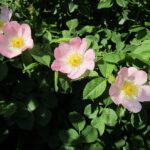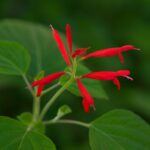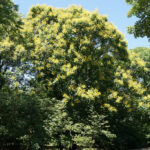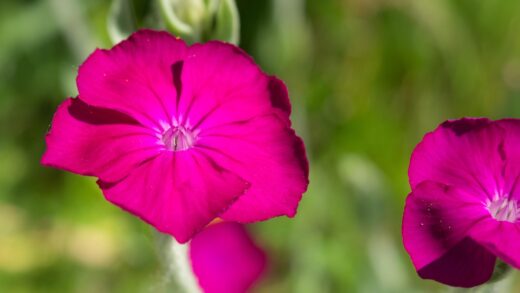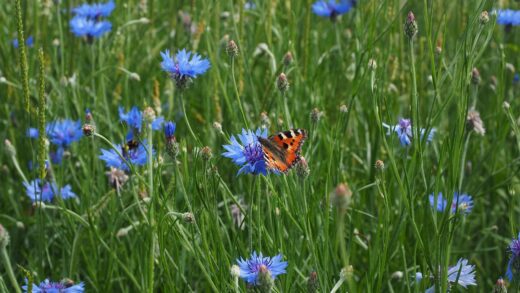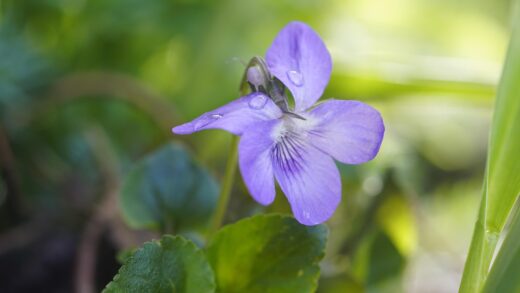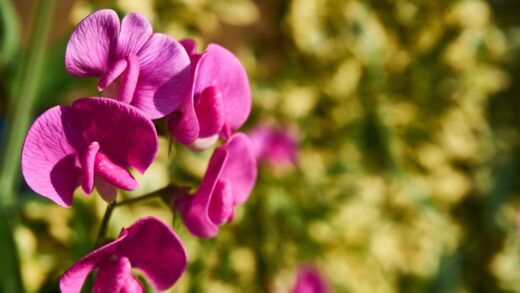Caring for the regal pelargonium, often admired for its stunning, large, and vibrantly colored flowers, requires a dedicated and informed approach that differs significantly from the care of common zonal geraniums. These plants, with their velvety, often ruffled petals, are not as forgiving of neglect and demand specific conditions to truly thrive and produce their signature opulent blooms. Understanding their unique needs regarding light, temperature, and watering is the foundational step toward cultivating healthy, show-stopping specimens. Success with these beauties is a matter of precision and observation, rewarding the attentive gardener with a display of unparalleled elegance throughout their blooming season, which typically spans from late spring to early summer.
The environmental conditions you provide are paramount to the health and vitality of your regal pelargonium. These plants flourish in bright, but indirect, sunlight, making an east-facing window an ideal indoor location, or a spot on a patio that receives gentle morning sun but is shielded from the harsh, scorching rays of the afternoon. Direct, intense sunlight can easily lead to leaf scorch, causing unsightly brown or yellow patches and stressing the plant, which can inhibit flower production. Consistent, moderate temperatures are also crucial; they prefer a daytime range of 18-24 degrees Celsius and cooler nighttime temperatures, which help to initiate bud formation. Drastic temperature fluctuations or exposure to drafts can cause stress, leading to bud drop and a generally weakened plant.
Proper watering technique is another critical pillar in the successful cultivation of regal pelargoniums. They are particularly susceptible to root rot, which makes overwatering a significant threat to their survival. It is essential to allow the top few centimeters of the soil to dry out completely between waterings. When you do water, do so thoroughly, allowing the excess to drain away freely from the bottom of the pot, and never let the plant sit in a saucer of standing water. The foliage should also be kept as dry as possible to prevent fungal diseases; therefore, watering the soil directly rather than from overhead is the recommended method. During the cooler, dormant months, their water needs decrease substantially, requiring only infrequent watering to prevent the soil from completely drying out.
The growing medium and feeding regimen you choose will directly impact the plant’s ability to flourish. A high-quality, well-draining potting mix is non-negotiable; a mixture specifically formulated for geraniums or a general-purpose compost amended with perlite or coarse sand will provide the necessary aeration and prevent waterlogging. During the active growing season in spring and early summer, a regular feeding schedule is beneficial. Utilize a balanced liquid fertilizer, perhaps one formulated for flowering plants with a higher potassium content, every two to three weeks. It is crucial to dilute the fertilizer to the recommended strength to avoid chemical burn to the roots. Cease all feeding as the plant enters its dormant period in the autumn and winter to allow it to rest.
General maintenance and observation
Regular grooming and vigilant observation are key to maintaining the health and aesthetic appeal of your regal pelargoniums. Throughout the growing season, it is important to practice deadheading, which is the removal of spent flower clusters. This not only keeps the plant looking tidy but, more importantly, it redirects the plant’s energy from seed production towards developing new blooms, thereby extending the flowering period. Use clean, sharp scissors or pruning shears to snip off the faded flower stalk at its base. This simple act encourages a more prolific and sustained floral display, ensuring your plant remains a vibrant centerpiece.
Inspecting your plant regularly is a proactive approach to pest and disease management. Closely examine the leaves, both top and bottom, as well as the stems, for any signs of common pests such as aphids, whiteflies, or spider mites. These pests are often found in clusters and can quickly multiply if left unchecked, causing damage by sucking sap from the plant. Early detection allows for more effective and less invasive treatment, such as wiping them off with a damp cloth or using an insecticidal soap spray. A healthy, well-cared-for plant is inherently more resistant to infestations, making consistent care your first line of defense.
Pruning is another vital aspect of long-term care, crucial for shaping the plant and promoting vigorous, bushy growth. The ideal time for a more substantial pruning is in the late summer or early autumn, after the main flowering period has concluded. This involves cutting back the main stems by about one-third to one-half, which encourages the development of new shoots and prevents the plant from becoming leggy and sparse. This „hard prune“ prepares the plant for its winter dormancy and sets the stage for a robust flush of growth the following spring. Always use sterile pruning tools to prevent the spread of disease between plants.
Finally, understanding the plant’s natural life cycle is fundamental to providing appropriate care throughout the year. Regal pelargoniums have distinct periods of active growth and dormancy. In spring and summer, they are in their active phase, requiring more water, nutrients, and light to support their vigorous growth and flowering. Conversely, in the autumn and winter, they enter a dormant or semi-dormant state where their metabolic processes slow down significantly. During this rest period, it is critical to reduce watering and cease fertilization to prevent root rot and allow the plant to conserve energy. Recognizing and respecting this natural rhythm is the hallmark of a successful pelargonium cultivator.
Soil and potting matters
Selecting the right container and potting medium is a decision that will have a lasting impact on the health of your regal pelargonium. The pot must have adequate drainage holes at the bottom to allow excess water to escape freely, as this is the single most important factor in preventing the dreaded root rot. Terracotta or clay pots are often an excellent choice because their porous nature allows for better air and moisture exchange through the sides of the pot, helping the soil to dry out more evenly. When it comes to size, choose a pot that is proportionate to the current root ball of the plant; a container that is too large will hold excess soil and moisture, which can also contribute to root decay.
The composition of the potting soil is just as critical as the choice of container. Regal pelargoniums demand a substrate that is both fertile and exceptionally well-draining. A standard, heavy potting soil will retain too much moisture and compact easily, suffocating the roots. To create an ideal mix, you can start with a high-quality, peat-based compost and amend it generously with materials that improve drainage and aeration, such as perlite, coarse horticultural sand, or fine grit. The goal is to create a light, friable mixture that holds enough moisture to sustain the plant but allows the excess to pass through quickly, ensuring the roots have access to the oxygen they need to thrive.
Repotting should be approached with a clear understanding of the plant’s needs and growth cycle. Typically, regal pelargoniums will need to be repotted every one to two years, or when they become root-bound, meaning the roots have filled the entire pot. The best time to undertake this task is in the early spring, just as the plant is beginning to emerge from its winter dormancy and new growth is apparent. This timing allows the plant to quickly establish itself in the new pot and utilize the fresh soil and increased space to fuel its spring growth spurt. When repotting, only go up one pot size to avoid over-potting and the associated risks of waterlogged soil.
When you are ready to repot your pelargonium, the process should be handled with care to minimize stress on the plant. Gently remove the plant from its current pot, taking care not to damage the root ball. Lightly tease out any circling or tightly bound roots to encourage them to grow outwards into the new soil. Place a layer of the fresh, well-draining potting mix in the bottom of the new pot, position the plant so that the top of the root ball is at the same level as it was previously, and then fill in around the sides with more of the mix. Firm the soil gently, but do not compact it, and water the plant thoroughly to help it settle into its new home.
Understanding the flowering cycle
The magnificent blooms of the regal pelargonium are the primary reason gardeners cultivate these plants, and understanding their specific flowering requirements is key to achieving a spectacular display. Unlike many other flowering plants, regal pelargoniums have a distinct and relatively short blooming period, typically occurring in the spring and early summer. The initiation of flower buds is heavily dependent on environmental cues, particularly temperature. These plants require a period of cooler temperatures, ideally between 10-15 degrees Celsius for several weeks during the winter, to stimulate the development of flower buds. Without this cool period, the plant may produce lush foliage but very few, if any, flowers.
Timing and duration of light also play a crucial role in the flowering process. Regal pelargoniums are often referred to as „long-day“ plants, meaning they tend to flower more profusely as the days lengthen in the spring. Providing them with bright, indirect light for at least six hours a day is essential during the bud formation and flowering period. Insufficient light is a common reason for a lack of blooms. Therefore, ensuring your plant is in an optimal location where it receives plenty of morning sunlight or filtered light throughout the day will significantly enhance its flowering potential and the vibrancy of the colors.
Once the flowering season is underway, certain care practices can help to prolong the display and encourage the production of more blooms. As previously mentioned, diligent deadheading of spent blossoms is crucial. When a flower fades, the plant naturally wants to put energy into creating seeds; by removing the old flower head, you interrupt this process and signal to the plant that it should produce more flowers instead. Additionally, ensuring the plant receives consistent moisture and nutrients during this high-energy period will provide it with the resources it needs to sustain its floral performance.
After the plant has finished its main flush of flowers in the summer, it is natural for blooming to cease. This is not a sign of a problem but rather a normal part of the plant’s annual cycle. It is during this post-flowering period in late summer and autumn that the plant begins to focus its energy on vegetative growth and preparing for winter dormancy. This is the ideal time for pruning, which helps to shape the plant and encourages the development of the new growth that will bear the following year’s flowers. Embracing this cycle of bloom and rest is fundamental to the long-term success and repeated flowering of your regal pelargonium.
Seasonal care adjustments
Adapting your care routine to the changing seasons is absolutely essential for the long-term health and vitality of a regal pelargonium. In spring, as the days grow longer and temperatures rise, the plant awakens from its winter dormancy. This is the time to gradually increase watering, ensuring the soil remains lightly moist but never saturated. It is also the moment to begin your feeding regimen, starting with a half-strength balanced fertilizer and gradually increasing to full strength as new growth becomes more vigorous. This period of awakening is also the ideal time for any necessary repotting, providing the plant with fresh nutrients and space to expand its root system for the upcoming growing season.
Summer brings the peak of the growing season, but it also presents challenges, particularly with heat and light intensity. While regal pelargoniums need bright light to flourish, the harsh midday and afternoon sun of summer can be damaging, causing leaf scorch and heat stress. It is crucial to provide some form of protection, such as moving the plant to a location with dappled shade or behind a sheer curtain indoors. Watering will need to be more frequent during hot, dry spells, but the cardinal rule of allowing the top layer of soil to dry out still applies. Continue your regular feeding schedule to support the plant through its final flowering push and subsequent foliage growth.
As autumn arrives, the plant begins to prepare for its dormant period. This is a time to scale back your care efforts significantly. Gradually reduce the frequency of watering, allowing the soil to become drier for longer periods. Fertilization should be stopped completely by mid-autumn to signal to the plant that it is time to rest and to prevent the encouragement of weak, late-season growth that would be susceptible to cold and disease. This is also the prime time to perform any significant pruning, shaping the plant and removing any leggy stems to encourage a compact, sturdy structure for the following year.
Winter is the period of rest, and your care should reflect this. For regal pelargoniums to set flower buds for the following spring, they require a cool, bright resting place, with temperatures ideally maintained between 10-15 degrees Celsius. An unheated porch, a cool conservatory, or a bright garage can be suitable locations. During this time, the plant’s water needs are minimal; you should only water sparingly, perhaps once every three to four weeks, just enough to prevent the root ball from drying out completely. The goal is to keep the plant alive but dormant, conserving its energy for the vigorous burst of growth that will come with the return of spring.
Troubleshooting common issues
Even with the most diligent care, you may occasionally encounter issues with your regal pelargonium. One of the most common problems is the yellowing of lower leaves. This can be caused by a variety of factors, but the most frequent culprits are improper watering—both too much and too little. Overwatering leads to root rot, preventing the roots from absorbing nutrients and causing leaves to yellow, while underwatering causes the plant to shed older leaves to conserve moisture. To diagnose the problem, carefully check the soil moisture and adjust your watering schedule accordingly. If overwatering is suspected, ensure the pot has excellent drainage and allow the soil to dry out more thoroughly between waterings.
Another frequent concern for growers is the failure of the plant to produce flowers. This is an incredibly frustrating situation, but it can almost always be traced back to a specific environmental factor. The most common reason for a lack of blooms is the absence of a required cool period during the winter. Regal pelargoriums need several weeks of cooler temperatures (around 10-15°C) to initiate bud formation. Insufficient light is another major cause; these plants need at least six hours of bright, indirect sunlight daily. Finally, improper fertilization, particularly using a feed that is too high in nitrogen, can encourage lush, green foliage at the expense of flowers.
Pest infestations, while not inevitable, are a challenge to be prepared for. Aphids and whiteflies are the most common sap-sucking insects to affect regal pelargoniums, often congregating on new growth and the undersides of leaves. Regular inspection is your best defense, as catching an infestation early makes it much easier to control. For minor issues, a strong jet of water or wiping the pests off with a cloth can be effective. For more persistent problems, applications of insecticidal soap or neem oil are excellent, less toxic options. Ensuring good air circulation around the plant can also help to deter these pests from taking hold.
Finally, fungal diseases such as botrytis, or grey mould, can become a problem, particularly in cool, damp, and stagnant conditions. This disease manifests as fuzzy grey patches on leaves, stems, and flowers, leading to rot. Prevention is far better than cure and relies on providing the right environment. Avoid overhead watering to keep the foliage dry, ensure there is good air circulation around the plant, and promptly remove any dead or decaying leaves and flowers. If an infection does occur, remove all affected parts immediately and, in severe cases, consider using a suitable fungicide, carefully following the manufacturer’s instructions.

